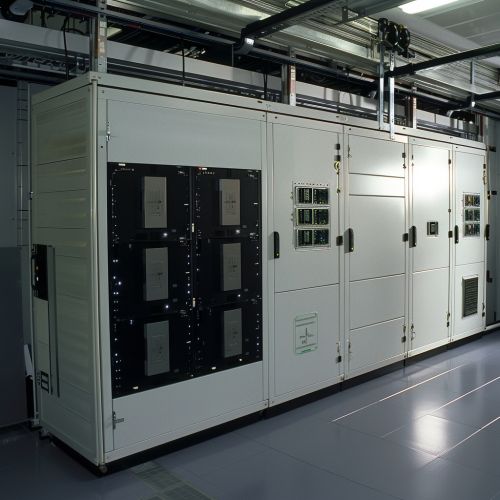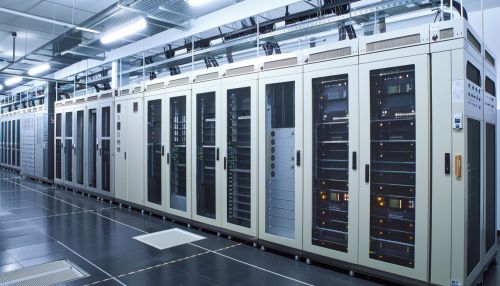Mainframe computer
Overview
A mainframe is a large, powerful computer that can process and manage vast amounts of data quickly. They are primarily used by large organizations for critical applications, including bulk data processing, such as census, industry and consumer statistics, enterprise resource planning, and financial transaction processing.
History
The term "mainframe" originated in the early days of the computer industry, when manufacturers would install their products in specially designed, room-sized metal frames. These frames, or "mainframes," housed the central processing unit (CPU), memory, and input/output devices of the computer. The first mainframes were built in the 1950s and were the size of large closets.
Architecture
The architecture of a mainframe computer is designed for processing large amounts of data quickly and in a high-volume, high-throughput environment. This is achieved through a combination of high-speed processors, large amounts of memory, and fast, efficient input/output devices.
Components
A mainframe computer consists of several components, each designed to perform a specific function. These components include the central processing unit (CPU), memory, storage devices, and input/output devices.
Central Processing Unit (CPU)
The CPU is the heart of the mainframe computer. It performs all the processing operations of the computer, including executing instructions, managing memory, and controlling input/output operations.
Memory
The memory in a mainframe computer is used to store data and instructions for processing. Mainframe computers typically have large amounts of memory to handle the high-volume processing tasks they are designed to perform.
Storage Devices
Storage devices in a mainframe computer are used to store data and instructions for processing. These devices can include hard disk drives, solid-state drives, and tape drives.
Input/Output Devices
Input/output devices in a mainframe computer are used to input data into the computer and output data from the computer. These devices can include keyboards, mice, monitors, printers, and network interfaces.
Operating Systems
Mainframe computers run on specialized operating systems designed to take advantage of their architecture and components. These operating systems are designed to handle large volumes of data and high levels of throughput.
Applications
Mainframe computers are used in a variety of applications, including data processing, financial transaction processing, enterprise resource planning, and customer relationship management.
Advantages and Disadvantages
Like all technologies, mainframe computers have their advantages and disadvantages. Advantages include high processing power, reliability, and scalability. Disadvantages include high cost, complexity, and the need for specialized skills to operate and maintain.
Future of Mainframe Computers
Despite the rise of distributed computing and cloud computing, mainframe computers continue to play a vital role in many large organizations. They offer unparalleled processing power, reliability, and security, making them an ideal choice for high-volume, mission-critical applications.
See Also


